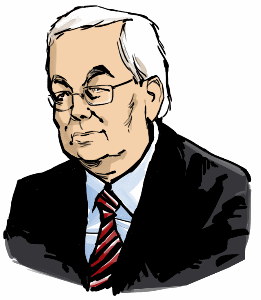© Gunnar Tómasson
17 October 2017
Prologue
A jig-saw puzzle of a thousand pieces takes time, and tests the patience of one that attempts to do so. Today, a link to a web-site – http://www.rosslynchapel.com/ – was posted on Facebook. The link of Rosslyn Chapel to Saga-Shakespeare Myth and Prophecy has long been known to me but on this web-site I came across what appears to be a previously missing piece of the puzzle:
About Rosslyn Chapel
‘It came into his mind to build a house for God’s service, of most curious work, the which that it might be done with greater glory and splendour, he caused artificers to be brought from other regions and foreign kingdoms and caused daily to be abundance of all kinds of workmen present as masons, carpenters, smiths, barrowmen and quarriers…..’
Father Hay, author of A Genealogie of the Saintclaires of Rosslyn, describes the start of Sir William St Clair’s plan.
Rosslyn Chapel was founded in 1446 as a place of worship and services continue to be held here weekly. The Chapel has also been a popular destination for visitors for generations. By the late 18th-century, it was starting to appear on itineraries and its profile greatly increased after the publication of Dan Brown’s novel, The Da Vinci Code, in 2003, and the subsequent film. Rosslyn Chapel Trust was established in 1995 to care for the Chapel and oversee its conservation and public access.
Addendum
(17 October 2017)
A circular stone church in the Orkney Islands, known as Girth House, is said to have been built on the model of the Holy Sepulchre in Jerusalem. In previous postings, I have used Girth House as symbol of the Holy Sepulchre. In Saga Myth, as construed by Einar Pálsson,”the world was created on a small island off Iceland’s south coast” known as Þrídrangr or Triple Rock.
This evening it occurred to me that the three Orkney “rock” features – Rosslyn Chapel, Girth House and the Gaukr Trandilsson runic inscription at Maeshowe – might have been designed on the conceptual model of Triple Rock? The results summarized below were quickly forthcoming.
***
I. Three Orkney Symbols – Saga-Shakespeare Myth
(Construction G. T.)
147657
A
Three Orkney Symbols
7084 = Rosslyn Chapel
5979 = Girth House
53555 = Maeshowe ¹
66618
B
Faith and Perfect Creation
2082 = Faith
-1000 = Darkness
37575 = St. Peter’s Basilica²
38657
C
Brennu-Njálssaga
And Advent of Christianity
6257 = Mörðr hét maðr. – Man was named Mörðr.
12685 = Höfðingjaskipti varð í Nóregi. – There was a change of chieftains in Norway.
5596 = Andlig spekðin – Spiritual Wisdom
-6960 = Jarðlig skilning – Earthly Understanding
11274 = Fara menn við þat heim af þingi. – At that people went home from Althing.
13530 = Ok lýk ek þar Brennu-Njálssögu. – And there I conclude saga of Burnt Njáll.
42382
A + B + C = 66618 + 38675 + 42382 = 147657
II. The start of Sir William St Clair’s plan.
(Genealogie of the Sainteclaires etc.)
147657
23527 = ‘It came into his mind to build a house for God’s service,
12943 = of most curious work,
26489 = the which that it might be done with greater glory and splendour,
32378 = he caused artificers to be brought from other regions and foreign kingdoms
25567 = and caused daily to be abundance of all kinds of workmen present
26753 = as masons, carpenters, smiths, barrowmen and quarriers…..’
147657
***
Calculator for converting letters to cipher values is at:
http://www.light-of-truth.com/ciphersaga.htm
¹ Saga Character – Runic Inscription
And Brennu-Njálssaga
A runic poem carved in stone at Maeshowe in Orkney features a heroic character mentioned in Brennu-Njálssaga who had been slain by his half-brother before the Saga begins. The reason for the carving is a mystery, but in view of Sir William having been Prince of Orkney I decided to see how the poem‘s Cipher Value might relate to that of Father Hay‘s description of the start of his plan, 147657. The poem and Cipher Values are as follows:
7070 = Þessar rúnar
5923 = reist sá maðr,
6553 = er rýnstr er
7149 = fyrir vestan haf,
5920 = með þeiri öxi,
6010 = er átti Gaukr
7157 = Tran[]ils sonr
7773 = fyrir sunnan land.*
53555
* These runes
were carved by that man
who is rýnstr (?)
west of the sea
with that axe
owned by Gaukr
Tran[]ils son
south off the land.
²St. Peter’s Basilica
Symbol of Perfect Creation
Façade inscription on its completion in 1612
23501 = IN HONOREM PRINCIPIS APOST PAVLVS V BVRGHESIVS
14074 = ROMANVS PONT. MAX. AN. MDCXII PONT. VII.*
37575
* Paul V Borghèse, pape, a fait ceci en l’an 1612,
en l’honneur du prince des apôtres.

 Gunnar Tómasson
Gunnar Tómasson